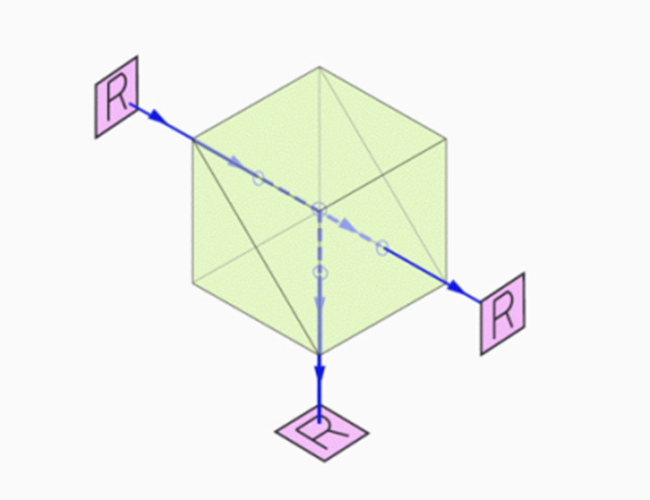ISO9001 Certified Professional Manufacturer & Supplier of Optics
+86-0431-87911611 admin@ytoptics.com
Contact us
-
 Email: admin@ytoptics.com
Email: admin@ytoptics.com
-
 Tel:86-0431-87911611
Tel:86-0431-87911611
-
 Add: 2# Automotive Innovation
Add: 2# Automotive Innovation
Jilin Province, China
Changchun Yutai Optics Co., Ltd.
Home > Products > Prisms > Beamsplitters

UV Fused Silica Beamsplitters
Fused silica is a high performance optical material with ultra-broad spectral transmission, low thermal expansion, and high laser damage threshold for ultraviolet (UV), visible (VIS), and infrared (IR) spectroscopy systems.
Share this:
What are the advantages of fused silica beamsplitters?
Core advantages of fused silica beamsplitters
(1) Ultra-wide spectral transmission
Deep Ultraviolet (DUV) to Near Infrared (NIR) are applicable, especially suitable for:
UV spectroscopy (e.g. 193 nm excimer laser systems).
UV laser processing (e.g. 355 nm UV laser cutting).
Infrared optics (e.g. 1550 nm fiber optic communication).
(2) High thermal stability
Extremely low coefficient of thermal expansion (near zero expansion), suitable for:
High and low temperature environments (e.g. space optics, laser refrigeration systems).
High power lasers (minimal thermal distortion).
(3) High laser damage threshold (LDT)
Laser damage resistance is better than BK7 and SF11, suitable for:
High-energy laser systems (e.g. Nd:YAG, femtosecond lasers).
UV laser (e.g. KrF 248 nm, ArF 193 nm).
(4) Low fluorescence & high chemical stability
No impurity fluorescence background, suitable for fluorescence microscopy, Raman spectroscopy.
Resistant to acid and alkali, humidity, suitable for biochemical testing, harsh environment.
Core advantages of fused silica beamsplitters
(1) Ultra-wide spectral transmission
Deep Ultraviolet (DUV) to Near Infrared (NIR) are applicable, especially suitable for:
UV spectroscopy (e.g. 193 nm excimer laser systems).
UV laser processing (e.g. 355 nm UV laser cutting).
Infrared optics (e.g. 1550 nm fiber optic communication).
(2) High thermal stability
Extremely low coefficient of thermal expansion (near zero expansion), suitable for:
High and low temperature environments (e.g. space optics, laser refrigeration systems).
High power lasers (minimal thermal distortion).
(3) High laser damage threshold (LDT)
Laser damage resistance is better than BK7 and SF11, suitable for:
High-energy laser systems (e.g. Nd:YAG, femtosecond lasers).
UV laser (e.g. KrF 248 nm, ArF 193 nm).
(4) Low fluorescence & high chemical stability
No impurity fluorescence background, suitable for fluorescence microscopy, Raman spectroscopy.
Resistant to acid and alkali, humidity, suitable for biochemical testing, harsh environment.
| What materials are commonly used for beamsplitters? | ||||
| Material | Transmittance (nm) | Refractive Index (@587.6nm) | Characteristic | Typical Application |
| BK7 Glass | 350-2000 | 1.5168 | Low cost, high homogeneity, easy processing | Visible NPBS, general spectral system |
| Fused Silica | 180-2500 | 1.4585 | High UV transmittance, low thermal expansion | UV/VIS PBS, laser system |
| CaF2 | 180-8000 | 1.4338 | Wide band, humidity intolerant | UV/IR spectroscopic prisms |
| Calcite | 350-2300 | no=1.658, ne=1.486 | Strong birefringence, natural crystal | Polarizing beam-splitting prisms (Glan prisms) |
| Silicon | 1200-7000 | 3.422 (@1500 nm) | High refractive index, impervious to visible light | Infrared PBS, thermal imaging systems |
| ZnSe | 600-16000 | 2.403 (@10.6 μm) | Excellent infrared transmission, expensive | CO₂ laser spectroscopy, infrared spectrometer |

TALK TO US 86-0431-87911611
86-0431-87911611
Call us now!
 86-0431-87911611
86-0431-87911611Call us now!
ONLINE CHAT
 2433808388
2433808388

